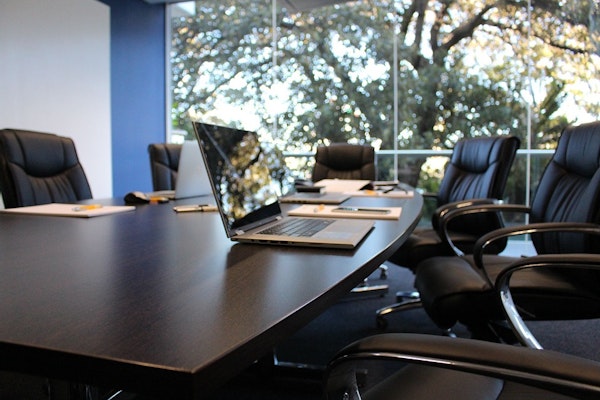
The Future Of Risk Mitigation: Connected Devices
As the world continues to invest in growing technology and the internet of things (IoT) evolves to offer more in the way of risk solutions, it’s no wonder that businesses and their risk teams are looking to utilize the capabilities offered.
April 9, 2021
Risk Management
Technology
Underwriting

COVID’s Secondary Perils: What They Are and Why They Can’t Be Ignored
Unlike flood risk receding after a storm, the secondary perils being ushered in by the pandemic could last for years to come. No doubt, as a seasoned risk professional, you hear the term ‘secondary peril’ and immediately think of natural catastrophes and any subsequent risk they could bring.
April 2, 2021
Risk Management

Third-Party Vendor Risk Management
It is an unfortunate truth that organizations are really only as secure as their least secure third-party vendor. This reality has been recently brought to the forefront.
March 31, 2021
Risk Management

Heading Off Surprises
Who had ‘giant cargo ship’ on their bingo card for possible disasters at the start of 2021? What about ‘derecho in Iowa’ in 2020? ‘Global pandemic’ at the outset of 2020?
.
March 30, 2021
Education & Training
Risk Management
.

What Cognitive Psychology Has To Teach Risk Professionals
The risk landscape has welcomed the invaluable insights that psychology and behavioral health have produced.
March 25, 2021
Risk Management

What Future Will We Choose?
Fast forward 15 years. U.S. catastrophe losses have leveled off at sub-$350 billion for the past three years, with 2035 marking a seven-year low. The Insurance Institute for Business and Home Safety (IBHS) just certified its 1,000th Fortified Community, meaning 75% of Americans now live in a jurisdiction with a truly holistic, fully risk-aware, climate resilience plan.
March 17, 2021
Risk Management

The Real Estate Sector Got Slugged by COVID. How Managing Vacant Building Risk Is Now a High Priority
From shortages of personal protective equipment to checking employees’ temperatures, to sending staff to work at home for an unspecified time frame, the COVID-19 pandemic has presented challenges for businesses that once seemed unimaginable.
March 12, 2021
Property
Risk Management

Recognizing Strategic Risks And The Role Of The CRO
Strategic risks can expose an organization to loss and even extinction when unrecognized or unmanaged. Think of the many well-known companies that have ceased to exist due to a failure to recognize the risks coming from new technology, changing customer preferences, heightened competition, new regulatory burdens or socio-economic volatility.
March 10, 2021
Risk Management

Arrogance And Nature’s Deadly Hand
For millennia, humans have struggled to survive and thrive on a sometimes deadly planet. Earthquakes, plagues, crop failures, floods, fires all periodically wipe out enormous numbers of lives.
March 4, 2021
Risk Management

Concerned About Natural Disasters? Meet Helix, An Advisory Board Dedicated To Finding Solutions
It didn’t gain as much attention in the news, but the past year brought about a series of natural disasters around the world in addition to the pandemic. This continues a major trend we have been witnessing for the last two decades.
March 3, 2021
Catastrophe
Risk Management

Mitigating Risk By Modernizing Legacy IT Systems
For organizations to ensure they can remain operational when disaster strikes, they must prepare their IT systems for potential disruptions before they ever arise. This year, states like New Jersey, Oregon and California saw their unemployment systems crash as a result of running on outdated mainframes, which are often over 60 years old and incapable of properly integrating with the internet and other modern technologies.
February 16, 2021
Risk Management
Technology

Insurers Make Fortune Magazine’s Most Admired Companies List
A number of insurance companies are among Fortune magazine’s 2021 ranking of the world’s most admired companies.
February 12, 2021
Risk Management

Remote Loss Adjusting Vs. Boots On The Ground: Why Both Are Crucial For Top-Notch Claims Performance
Multiple catastrophes, rising claims settlement costs, social unrest, a pandemic and lockdowns — 2020 was certainly one hell of a year!
February 8, 2021
Risk Management
Technology

Short Selling, GameStop And What Risk Management Has To Say About It All
There is something about Wednesdays in January this year. On January 6, the nation experienced an insurrection. A week later on Wednesday, January 12, Congress voted to approve the articles of impeachment. On Wednesday, January 20th, the U.S. witnessed an inauguration. Finally, on Wednesday, January 27, Wall Street felt the impact of coordinated retail investors.
February 5, 2021
Education & Training
Risk Management

Increasing Regulation On Climate Change
In 2021, the increasing effects of climate change and the response from U.S. insurance regulators will create both challenges and opportunities for insurers.
February 3, 2021
Legislation & Regulation
Risk Management





